Congregational polity, or congregationalist polity, often known as congregationalism, is a system of ecclesiastical polity in which every local church (congregation) is independent, ecclesiastically sovereign, or "autonomous". Its first articulation in writing is the Cambridge Platform of 1648 in New England.

The Second Great Awakening was a Protestant religious revival during the late 18th to early 19th century in the United States. It spread religion through revivals and emotional preaching and sparked a number of reform movements. Revivals were a key part of the movement and attracted hundreds of converts to new Protestant denominations. The Methodist Church used circuit riders to reach people in frontier locations.

The Restoration Movement is a Christian movement that began on the United States frontier during the Second Great Awakening (1790–1840) of the early 19th century. The pioneers of this movement were seeking to reform the church from within and sought "the unification of all Christians in a single body patterned after the church of the New Testament."
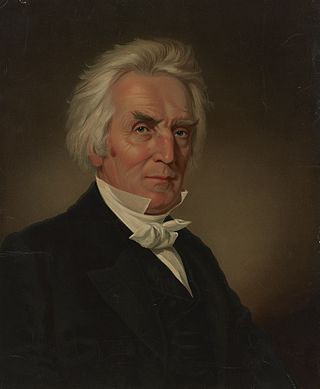
Alexander Campbell was an Ulster Scots immigrant who became an ordained minister in the United States and joined his father Thomas Campbell as a leader of a reform effort that is historically known as the Restoration Movement, and by some as the "Stone-Campbell Movement." It resulted in the development of non-denominational Christian churches, which stressed reliance on scripture and few essentials.
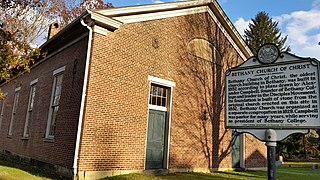
The Churches of Christ, also commonly known as the Church of Christ, is a loose association of autonomous Christian congregations located around the world. Typically, their distinguishing beliefs are that of the necessity of baptism for salvation and the prohibition of musical instruments in worship. Many such congregations identify themselves as being nondenominational. The Churches of Christ arose in the United States from the Restoration Movement of 19th-century Christians who declared independence from denominations and traditional creeds. They sought "the unification of all Christians in a single body patterned after the original church described in the New Testament."
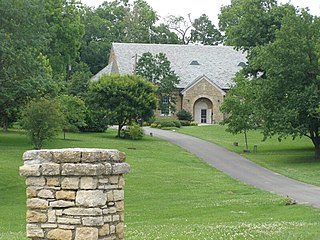
Cane Ridge was the site of a huge camp meeting in 1801, the Cane Ridge Revival, that drew thousands of people and had a lasting influence as one of the landmark events of the Second Great Awakening, which took place largely in frontier areas of the United States. The event was led by eighteen Presbyterian ministers, but numerous Methodist and Baptist preachers also spoke and assisted. Many of the "spiritual exercises", such as glossolalia and ecstatic attendees, were exhibited that in the 20th century became more associated with the Pentecostal movement.

The camp meeting is a form of Protestant Christian religious service originating in England and Scotland as an evangelical event in association with the communion season. It was held for worship, preaching and communion on the American frontier during the Second Great Awakening of the early 19th century. Revivals and camp meetings continued to be held by various denominations, and in some areas of the mid-Atlantic, led to the development of seasonal cottages for meetings.
The Springfield Presbytery was an independent presbytery that became one of the earliest expressions of the Stone-Campbell Movement. It was composed of Presbyterian ministers who withdrew from the jurisdiction of the Kentucky Synod of the Presbyterian Church in the United States of America on September 10, 1803. It dissolved itself on June 28, 1804, with the publication of a document titled the Last Will and Testament of The Springfield Presbytery, marking the birth of the Christian Church of the West.
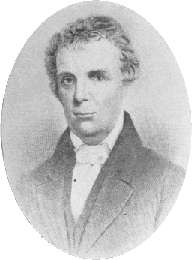
Barton Warren Stone was an American evangelist during the early 19th-century Second Great Awakening in the United States. First ordained a Presbyterian minister, he and four other ministers of the Washington Presbytery resigned after arguments about doctrine and enforcement of policy by the Kentucky Synod. This was in 1803, after Stone had helped lead the mammoth Cane Ridge Revival, a several-day communion season attended by nearly 20,000 persons.
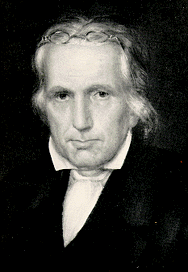
Thomas Campbell was a Presbyterian minister who became prominent during the Second Great Awakening of the United States. Born in County Down, he began a religious reform movement on the American frontier. He was joined in the work by his son, Alexander. Their movement, known as the "Disciples of Christ", merged in 1832 with the similar movement led by Barton W. Stone to form what is now described as the American Restoration Movement.
The Christian Connection was a Christian movement in the United States of America that developed in several places during the late 18th and early 19th centuries, composed of members who withdrew from other Christian denominations. It was influenced by settling the frontier as well as the formation of the new United States and its separation from Great Britain. The Christian Connection professed no creed, instead relying strictly on the Bible.
Bullittsburg Baptist Church is located at 2616 Bullittsburg Church Road, Petersburg, Boone County, Kentucky. This Baptist Church was organized in June, 1794, by Elders John Taylor (1752-1833), Joseph Redding, and William Cave. The church erected the first house of worship in 1797. This is the oldest church in the northern region of Kentucky.

As of the 2010 census, the United States Commonwealth of Kentucky had an estimated population of 4,339,367, which is an increase of 297,174, or 7.4%, since the year 2000. Approximately 4.4% of Kentucky's population was foreign-born as of 2010. The population density of the state is 107.4 people per square mile.
The Brush Run Church was one of the earliest congregations associated with the Restoration Movement that arose during the Second Great Awakening of the early 19th century. In 1811, a congregation of Christian reformers known as the Christian Association of Washington (Pennsylvania) reconstituted itself as a church and constructed a new building to replace the temporary log building where they began. Because it was built on the farm of William Gilchrist, near a stream called Brush Run, both the building and the congregation became known as Brush Run Church. It was the center of activity for Thomas and Alexander Campbell, father and son respectively, in their movement for Christian reform on the American frontier. The meeting house was later used as a blacksmith shop, then as a post office and finally it was moved to Bethany, Virginia.
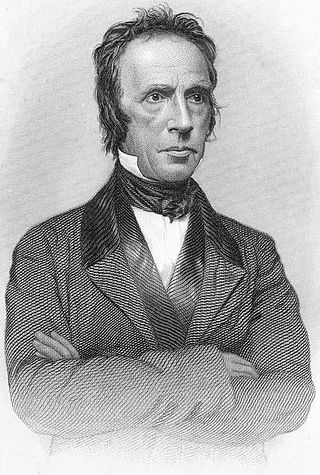
Walter Scott was one of the four key early leaders in the Restoration Movement, along with Barton W. Stone, Thomas Campbell and Thomas' son Alexander Campbell. He was a successful evangelist and helped to stabilize the Campbell movement as it was separating from the Baptists.
The Christian Association of Washington was an organization established by Thomas Campbell in 1809 to promote Christian unity. It was a study group that Campbell formed with like minded friends and acquaintances in the local neighborhood of Washington, Pennsylvania. The group sought to foster unity by focusing on a common form of Christianity that they could all agree upon. This charter that Campbell wrote for this group, the Declaration and Address of the Christian Association of Washington, became one of the most important early texts of the Restoration Movement.
The Christians (Stone Movement) were a group arising during the Second Great Awakening of the early 19th century. The most prominent leader was Barton W. Stone. The group was committed to restoring primitive Christianity. It merged with the Disciples of Christ (Campbell Movement) in 1832 to form what is now described as the American Restoration Movement (also known as the Stone-Campbell Restoration Movement.)
The Disciples of Christ (Campbell Movement) were a group arising during the Second Great Awakening of the early 19th century. The most prominent leaders were Thomas and Alexander Campbell. The group was committed to restoring primitive Christianity. It merged with the Christians (Stone Movement) in 1832 to form what is now described as the American Restoration Movement (also known as the Stone–Campbell Restoration Movement).
The Christian Messenger was a religious magazine established by the early Restoration Movement leader Barton W. Stone in 1826. The paper was a key means of communication for the "Christians" led by Stone and a primary source of unity in the movement, but consistently struggled for survival. It also played a key role in promoting the merger of the "Christians" with the "Disciples" led by Thomas and Alexander Campbell.
The Revival of 1800, also known as the Red River Revival, was a series of evangelical Christian meetings which began in Logan County, Kentucky. These ignited the subsequent events and influenced several of the leaders of the Second Great Awakening. The events represented a transition from British traditions to innovations arising from the unique needs and culture of Americans in the new century, especially on the frontier. The startling manifestations of revival fervor that first occurred in June 1800 at the Red River Meeting House, a small Presbyterian congregation led by James McGready, began as a Scottish sacrament service, but led to the important innovation of serial religious services later known as camp meetings.










